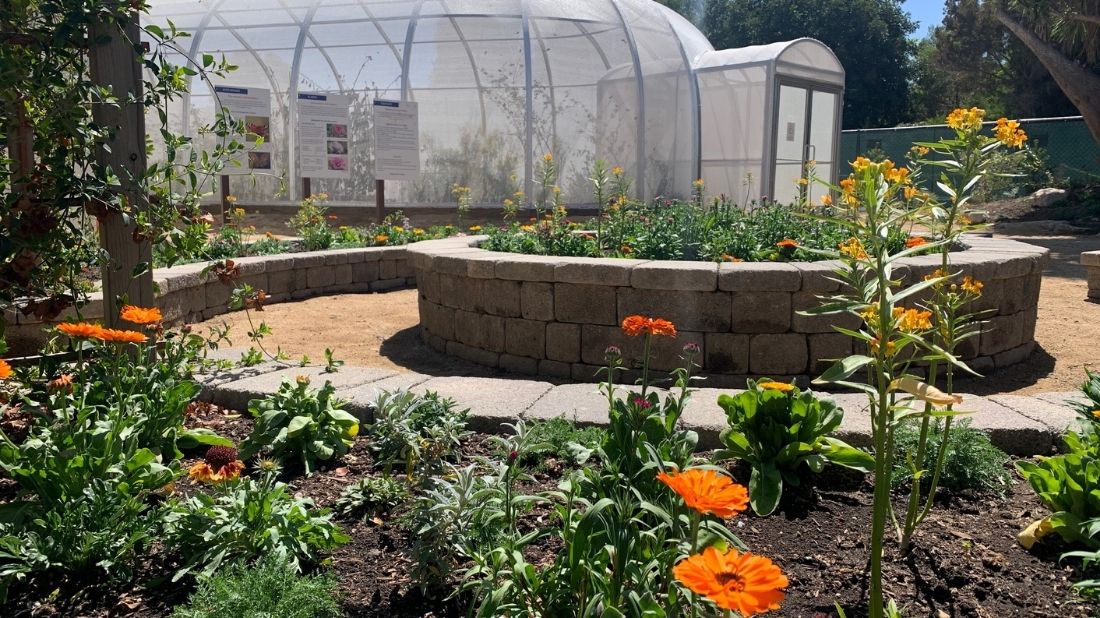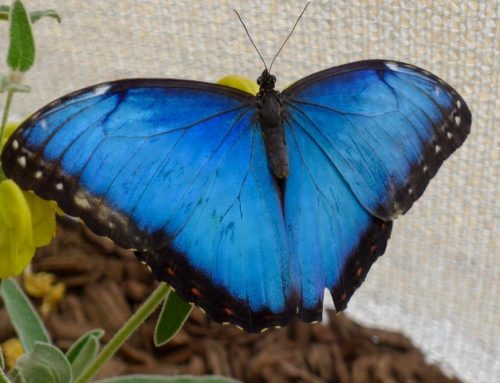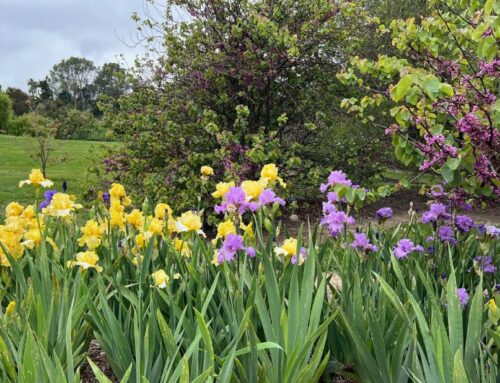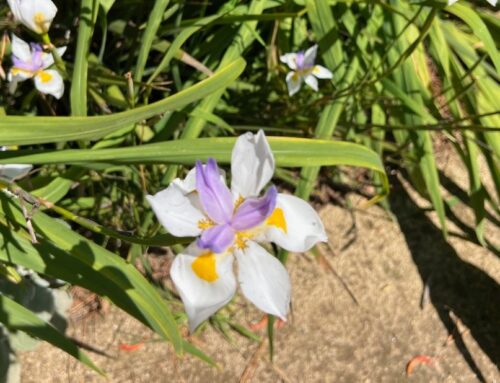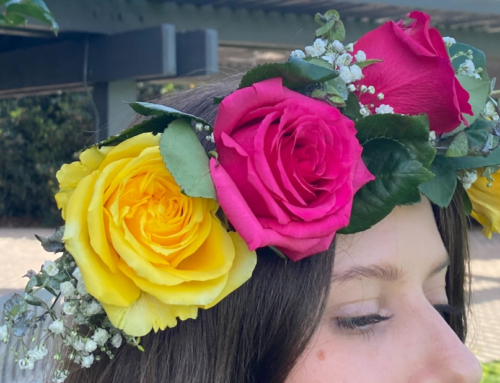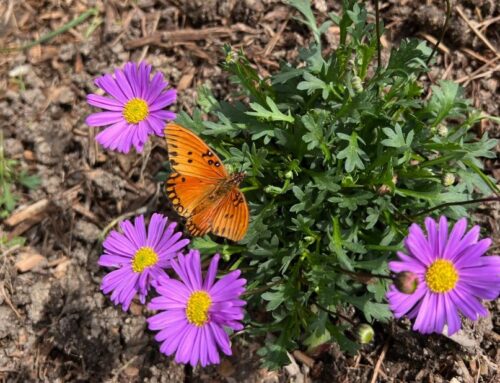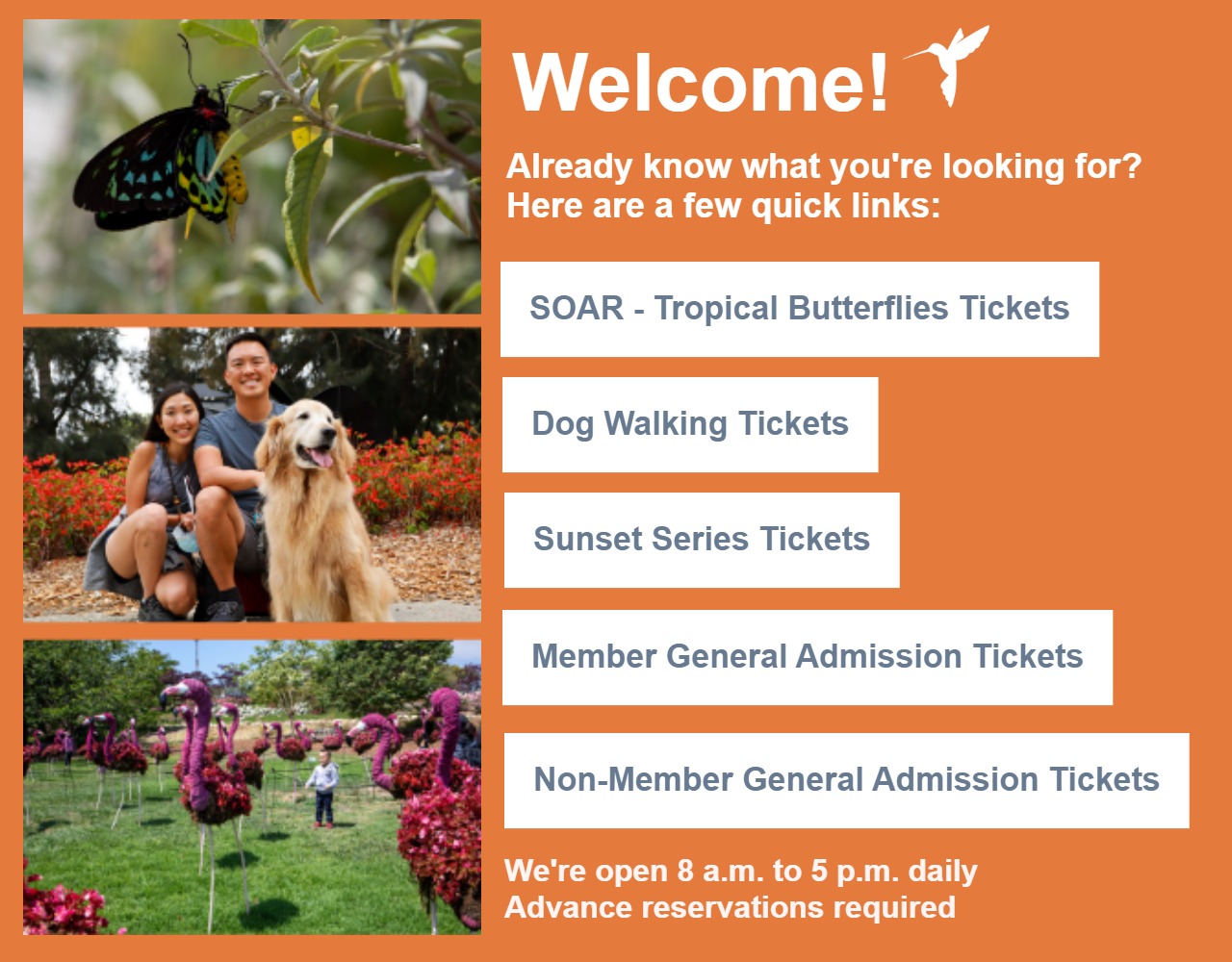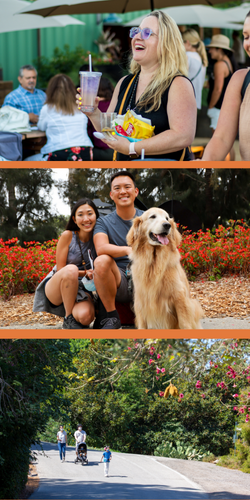SOAR – Tropical Butterflies at South Coast Botanic Garden is the first butterfly exhibit the Garden has ever hosted. As the immersive exhibit was coming together, we realized there are many aspects to the experience. To ensure all of our visitors make the most out of their time, we’ve put together the ultimate how-to guide for visiting SOAR. These guidelines are helpful to know before you go and can help guide your experience once you’re here. So while we encourage you to read them in advance, feel free to also pull this guide back up as you make your way through the exhibit. Let’s SOAR!
- Butterfly wings are transparent.
- Butterflies taste with their feet.
- Butterflies can’t fly when it’s cold.
- Butterflies sleep upside-down.
- Butterflies have four wings, not two.
- Butterflies can’t procreate in the pavilion—it’s not allowed!
Ask us about these things when you visit!
KNOW BEFORE YOU GO
- Wearing bright colors, like the colors of your favorite flowers, can attract the butterflies to come closer to you, and maybe even land on you!
- No strollers or wagons are allowed inside the pavilion, but there is stroller parking available behind the pavilion. Ask an employee or volunteer if you need help finding stroller parking.
- There are butterfly souvenirs available for purchase at our kiosk in Palm Circle, including children’s butterfly wings, butterfly guidebooks, butterfly gardens, hats, visors and more.
- On cloudy days, butterflies will not be as active as they are on sunny days. Butterflies are a lot like little solar collectors. Butterflies use the energy from the sun to get them moving. If it is a cloudy day, keep a close eye on the undersides of trees and bushes for roosting butterflies (this is a great way to get an up-close look at them). Ask a SOAR Guide to help you find them inside the pavilion!
- Consider bringing a small pair of binoculars with you, to get a better view of butterflies perched high in the exhibit.
- We are introducing our new Pollination Station during SOAR. The Pollination Station is part of our new Discovery Station cart program we are rolling out beginning in April. While SOAR is happening, we will offer Pollination Stations in the Garden near the pavilion to enhance the SOAR experience and learning. The goal of the Pollination Station is to help our guests understand the natural world around them, and their role in it, in a unique way. Our May schedule is:
- Sunday, June 6, 10:00am – 12:00pm and 1:00 -3:00pm
- Sunday, June 13, 10:00am – 12:00pm and 1:00 – 3:00pm
- Tuesday, June 15, 10:00am – 12:00pm and 1:00 – 3:00pm
- Sunday, July 11, 10:00am – 12:00pm and 1:00 -3:00pm
- Sunday, July 18, 10:00am – 12:00pm and 1:00 – 3:00pm
- Tuesday, July 20, 10:00am – 12:00pm and 1:00 – 3:00pm
- Sunday, July 25, 10:00am – 12:00pm and 1:00 – 3:00pm
Pollination Stations are facilitated by trained volunteers called Discovery Guides. If you’re interested in becoming a Discovery Guide, please fill out this form.
- SOAR begins before you enter the pavilion with an emergence chamber to view caterpillars and pupae, and a newly planted Garden area that features host and nectar plants to naturally attract butterflies and other pollinators.
WHILE INSIDE THE PAVILION
-
- Slow down and observe. Butterfly spotting takes patience!
- Watch where you’re walking. The butterflies may go to the ground for warmth.
- Ask questions – staff and volunteers want to help you experience and understand the magic of butterflies.
- Look for feeding stations and puddling areas, where you can get a closer view of the butterflies.
- Visit the emergence chamber, where you can watch new butterflies and moths break out of their pupal cases. You might have to wait for a while to see one emerge, but it is well worth it.
- Take lots of pictures! Where else will you have that many butterflies within reach of your camera lens?
- Check for hitchhikers before you exit the butterfly house. Ask a friend to make sure no butterflies have perched on your back. Staff and volunteers will help with this as well.
- Food or drinks are not allowed in the pavilion.
- Stay on the pathways and avoid stepping onto the plant beds.
- Avoid touching the plants or picking the flowers.
- Do not pick up or handle the butterflies, unless a staff member invites you to do so.
- Abide by all of the Garden’s COVID-19 protocols throughout the pavilion, and the entire exhibit.
FREQUENTLY ASKED QUESTIONS
Q: Which country can these butterflies be found?
A: The butterflies in this exhibit are found from all over the world, but mostly from the Americas (North, Central and South).
Q: Are the butterflies collected from the wild?
A: NO! Butterfly farmers raised all of the butterflies in this exhibit. Butterflies are raised on these farms specifically for use in butterfly exhibits. These butterfly farmers preserve forests and land all over the world.
Q: How long do the butterflies live?
A: Each species has a different life span. Some of the silkworm moths only live for about a week, while migrating monarchs can live for about 10 months. The average for North American and world-wide butterflies in an exhibit is about 2 to 4 weeks.
Q: What happens to all of the butterflies at the end of the exhibit run?
A: Because the butterflies have such a short lifespan, they will be allowed to live out the rest of their lives in the exhibit. These butterflies (that were raised by butterfly farmers) cannot be released into the wild due to the potential for disease, etc.
Q: Can I touch them?
A: Do not try to grab butterflies or pick them up. If a butterfly lands on you, that is OK. Enjoy the visit of the butterfly, but remember not to touch or grab the butterfly.
Q: Why do the butterflies land on us?
A: The butterflies may be attracted to perfumes or the color of your clothing. The butterflies may also be looking for food (they do like sticky-faced kids and sweaty people). Yummy!
Q: What’s the difference between a chrysalis and a cocoon?
A: Both chrysalides and cocoons are technically pupae. Pupa is the life stage between larva (caterpillar) and adult (butterfly). Most butterflies produce a chrysalis. The chrysalis is formed inside the body of the caterpillar, and then the caterpillar drops its skin and head capsule and that is it. Most moths form a cocoon. The caterpillar (larva) spins a silken enclosure and then changes inside the enclosure.
CLICK HERE TO PURCHASE YOUR SOAR TICKETS
The Garden has remained open to serve the community by being a place to encourage wellness and health through nature and open space. Please help keep us open by considering a gift to the Garden. You can do so here.


